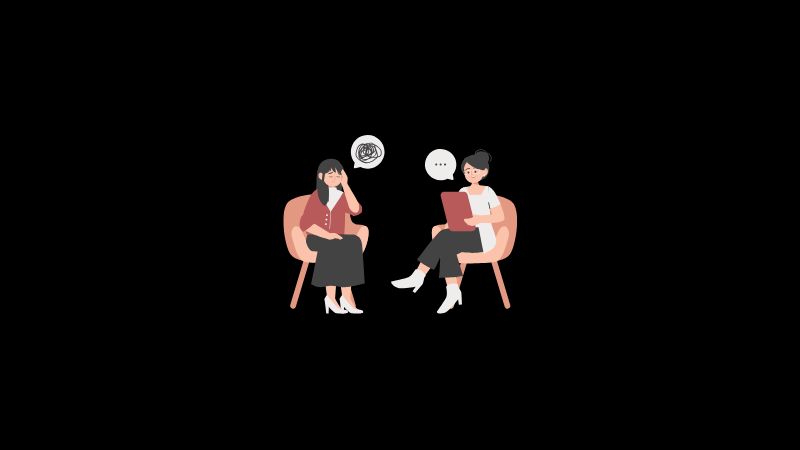Table of Contents
Affiliate link notice: As an affiliate of BetterHelp and other third-party vendors, We will receive compensation if you make a purchase using the links provided on this page. For more information, visit our disclosure page.
Last Updated on September 9, 2025 by Randy Withers
Everyone faces stress, sadness, and setbacks. But sometimes the weight becomes too heavy and begins to affect how you think, feel, and function. Recognizing when it’s time to seek mental health help can feel confusing—many people second-guess their needs or wait for a crisis before reaching out. You don’t have to. Early support reduces suffering, builds coping skills, and prevents problems from escalating.
This guide explains what mental health help actually looks like, then offers seven common indicators that it may be time to connect with support. You’ll find clear rationale for each sign and practical next steps so you can decide—confidently—how to move forward.

7 Clear Signs You Shouldn’t Ignore
What Does Mental Health Help Look Like?
Mental health support is broader than many people realize. Psychotherapy is one path: a licensed therapist provides a structured, private space to understand your emotions, reframe unhelpful thoughts, and learn skills (like problem-solving, boundary-setting, or anxiety-reduction techniques). Some people start with individual therapy, while others prefer to learn alongside peers in clinician-led group therapy—especially when the focus is specific (e.g., anxiety management, grief, or trauma recovery). Either route can reduce distress and improve daily functioning over time.
For some, medication is a helpful addition—especially when symptoms feel constant or overwhelming. You might consult with a psychiatrist or a psychiatric nurse practitioner to discuss options, benefits, and side effects, and to create a plan that fits your goals. Medication doesn’t replace therapy; often, the combination provides the most relief by addressing both biology and behavior.
Mental health help can also be community-based. Peer and self-help groups (like AA or NA) offer shared experience and accountability; they’re especially useful when isolation or substance use complicate mood. In moments of acute crisis—when safety is at risk—hospital or partial-hospital programs provide stabilization and intensive care. And never overlook everyday social supports: a trusted friend, mentor, or family member can be a vital first step, helping you recognize what you’re going through and encouraging you to reach out for professional care when needed.
7 Signs You Need Mental Health Help
If you’ve been concerned about your mental health, pay attention to persistent patterns that interfere with work, relationships, or daily responsibilities. When you notice the signs below showing up for more than a couple of weeks—or intensifying—this is a sign it may be time to talk with a professional.
1. Persistent Sadness or Hopelessness
Feeling down once in a while is normal; feeling persistently sad, empty, or hopeless is different. When these emotions linger, you may notice reduced motivation, difficulty experiencing pleasure, or thoughts like “what’s the point?” The rationale here is straightforward: untreated low mood tends to narrow your world—fewer activities, fewer connections—which in turn deepens depression.
What to do next: track your mood (simple 1–10 ratings), reintroduce one manageable activity you used to enjoy, and schedule an intake with a therapist. If the heaviness feels unshakeable, adding a medical evaluation can clarify whether medication might help jump-start relief while you build coping skills.
2. Difficulty Managing Daily Life
Mental health symptoms often show up as practical problems—missed deadlines, neglected hygiene, unpaid bills, or a messy living space you can’t face. The rationale: when your brain is overloaded by stress, anxiety, or depression, executive functions (planning, prioritizing, initiating tasks) sputter. It’s not laziness; it’s capacity.
What to do next: pick one small routine (e.g., morning shower, 10-minute tidy, or a short walk) and anchor it to something you already do (after coffee, before lunch). Consider therapy that targets organization and activation strategies (behavioral activation, CBT). If these struggles persist despite effort, a clinical assessment can uncover underlying contributors (e.g., depression, ADHD, anxiety) and guide tailored support.
3. Changes in Sleep and Appetite
Your body often signals what your mind is carrying. Big swings in sleep (insomnia, oversleeping) or appetite (overeating, undereating) are common when mental health shifts. Sleep disorders can worsen mood, concentration, pain tolerance, and stress reactivity; in turn, poor mood makes restorative sleep even harder—creating a loop.
What to do next: stabilize basic rhythms with small, repeatable steps—consistent wake time, morning light, a brief wind-down routine, and balanced meals/snacks even if appetite is low. If sleep problems persist or include nightmares, snoring/pauses in breathing, or frequent panic at night, discuss with a primary care provider and a therapist; treating sleep and mood together usually yields faster improvement.
4. Withdrawal From Friends and Activities
Pulling back from people and passions is a classic (and understandable) response to emotional pain. The rationale: isolation reduces positive feedback from your environment—less laughter, less movement, fewer accomplishments—which can quietly reinforce depression or anxiety. The longer you avoid, the harder “re-entry” feels.
What to do next: choose one low-pressure connection this week (text a friend, attend a short group, or join a virtual meeting). Set a time limit (e.g., 30 minutes) so it’s doable, and debrief afterward: what helped, what didn’t, what you’ll try next. Therapists often use graded exposure and values-based goals to rebuild connection at a pace that feels safe.
5. Increased Use of Alcohol or Substances
Using alcohol or drugs to cope with stress, worry, or low mood is a red flag. Substances may offer temporary relief but typically worsen sleep, mood, and anxiety, and can quickly become another problem to manage. The rationale: substance use hijacks the brain’s reward pathways, masking issues short-term while increasing vulnerability long-term.
What to do next: be honest with yourself about frequency and triggers. Replace one substance occasion this week with a different soothing routine (walk, call a friend, hot shower, guided breathing). If cutting back feels hard, combine therapy with peer support (e.g., AA/SMART Recovery). Medical consultation can address cravings and discuss medication options that support sobriety if needed.
6. Uncontrollable Worry, Panic, or Intrusive Thoughts
When worry becomes constant, panic attacks appear, or intrusive thoughts interrupt your day, your nervous system is doing its best to protect you—but it’s stuck in “high alert.” The rationale: chronic anxiety narrows attention, fuels avoidance, and erodes confidence, making ordinary tasks feel risky or overwhelming.
What to do next: learn one grounding skill (paced breathing, 5–4–3–2–1 sensory exercise) and practice it daily—not just during distress. Therapy can help you challenge catastrophic thoughts and gradually face what you’ve been avoiding. If symptoms are frequent or severe, a medical evaluation can determine whether short- or long-term medication might help while you build coping capacity.
7. Thoughts of Self-Harm or Inability to Stay Safe
If you’ve had thoughts of harming yourself, feel like you’re a burden, or worry you can’t stay safe, treat that as urgent—not as a personal failure. The rationale is simple: safety comes first. These thoughts signal that your system is overwhelmed and needs immediate, compassionate support.
What to do next: tell someone you trust today and make a safety plan (warning signs, coping steps, people you can call, places you can go). If you’re in immediate danger, call 911 or the Suicide & Crisis Lifeline at 988 (U.S.). Hospitals and crisis centers are there to stabilize you and connect you with outpatient care. Reaching out quickly protects your future options—and your life.
Final Thoughts
Struggling doesn’t mean you’re broken; it means you’re human. If you recognize yourself in these patterns, consider this your permission to start exploring mental health help before things get worse. You can begin small—one conversation, one appointment, one skill—and build from there.
Most importantly, you don’t have to do this alone. Whether you talk with a therapist, a physician, a peer group, or a trusted friend, the decision to seek help is an act of strength. With the right support, it’s entirely possible to feel more stable, more connected, and more like yourself again.




![How To Start Your Own Mental Health Blog A Complete Guide For Beginners [2021]](https://www.blunt-therapy.com/wp-content/uploads/How-To-Start-Your-Own-Mental-Health-Blog-A-Complete-Guide-For-Beginners-2021.jpg)




Hi – I want to suggest that your advice to seek inpatient care in the case of a crisis is seriously misguided. I can only speak from my own experience, but when I described it to my providers after I was finally released, none of my 3 providers were at all surprised. The feedback I got was that more patients have a bad experience than a helpful one. By “bad” I mean that I left the facility with more pain and trauma to deal with than what I already walked in with.
The facility could not meet my treatment needs and I got worse, which resulted in a status downgrade from voluntary to hold. Nonetheless I continued to be handled in counter-therapeutic ways, including being restricted from treatment after I had complained that I wasn’t getting enough treatment! Additionally, at no time before or after I was banned from groups for a day, did anyone give me feedback on my behavior; I had no idea what I did or said that was problematic. There was exactly one nurse who did anything to try and help, but she was not supported in her efforts to make it less difficult for me to access what I needed to feel safe or comfortable.
Instead of helping me, they treated me like I was there to be punished. There are fates worse than death, and being in an inpatient facility run by UHS is one of them.
Thank you very much for your feedback. While I am not sure that I agree that seeking inpatient care is seriously misguided based on one reader’s personal experience in country different than my own, it is nevertheless fair to say that inpatient care is not a panacea, and there are certainly risks. I wish you well on your journey!